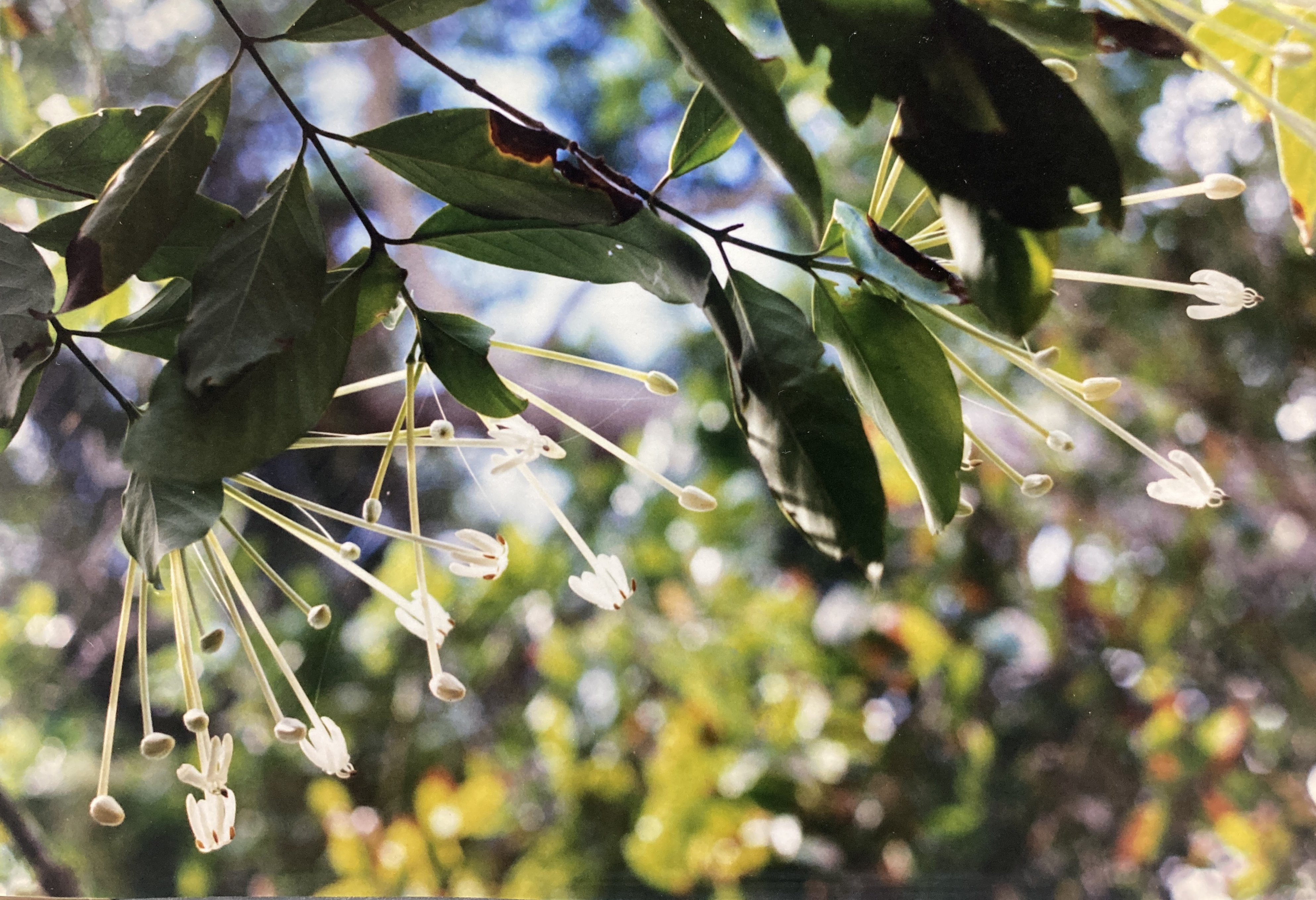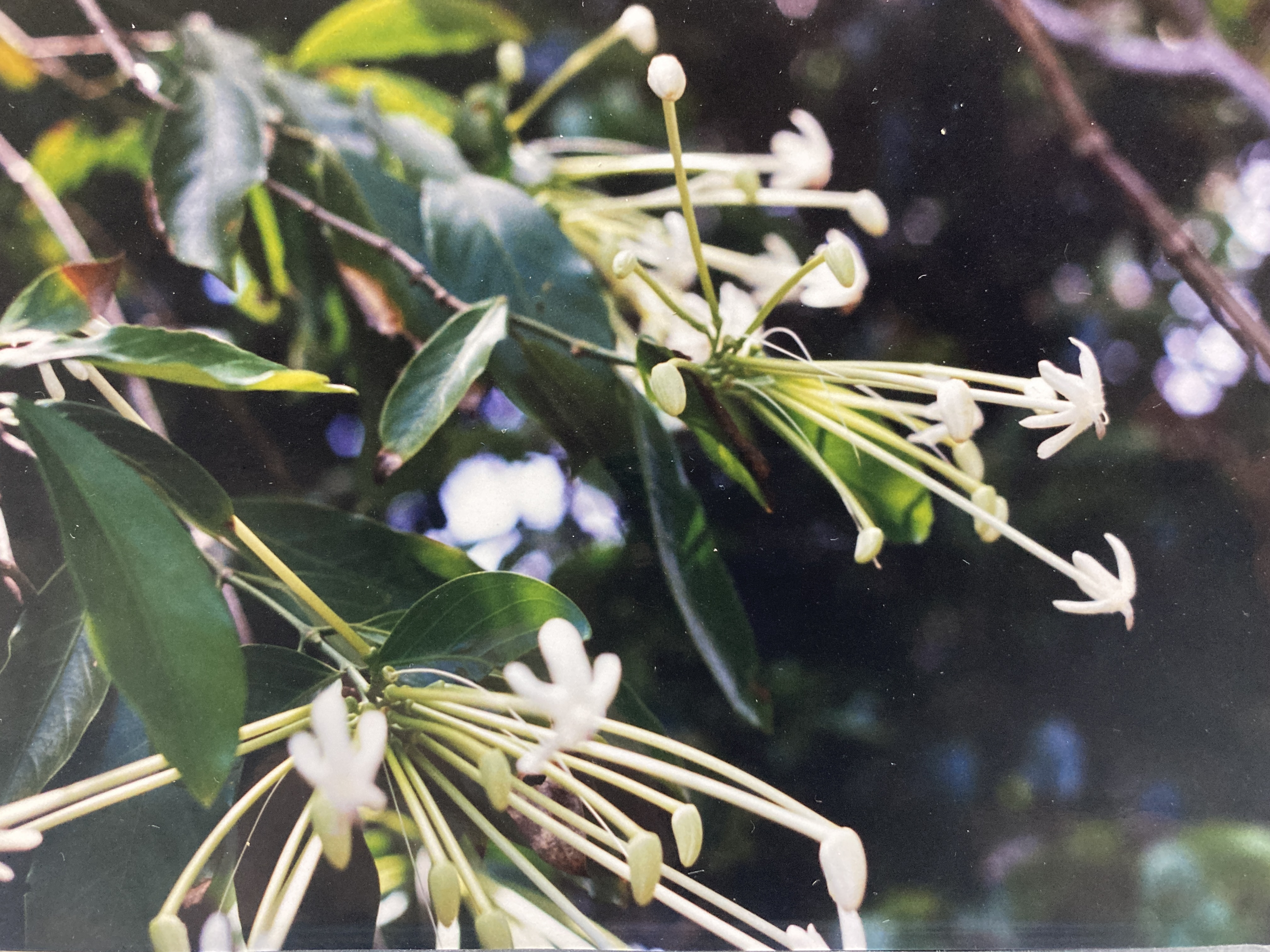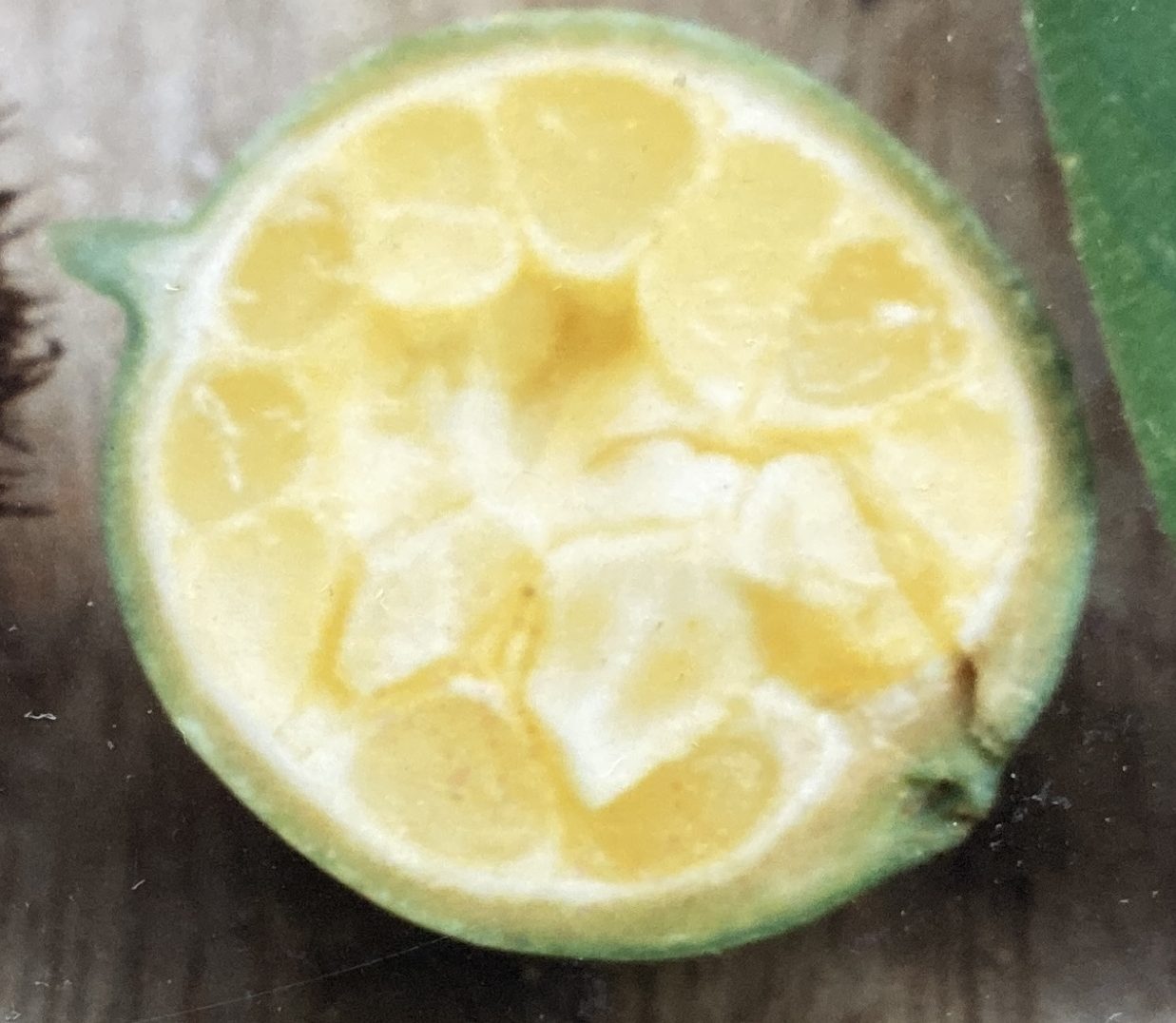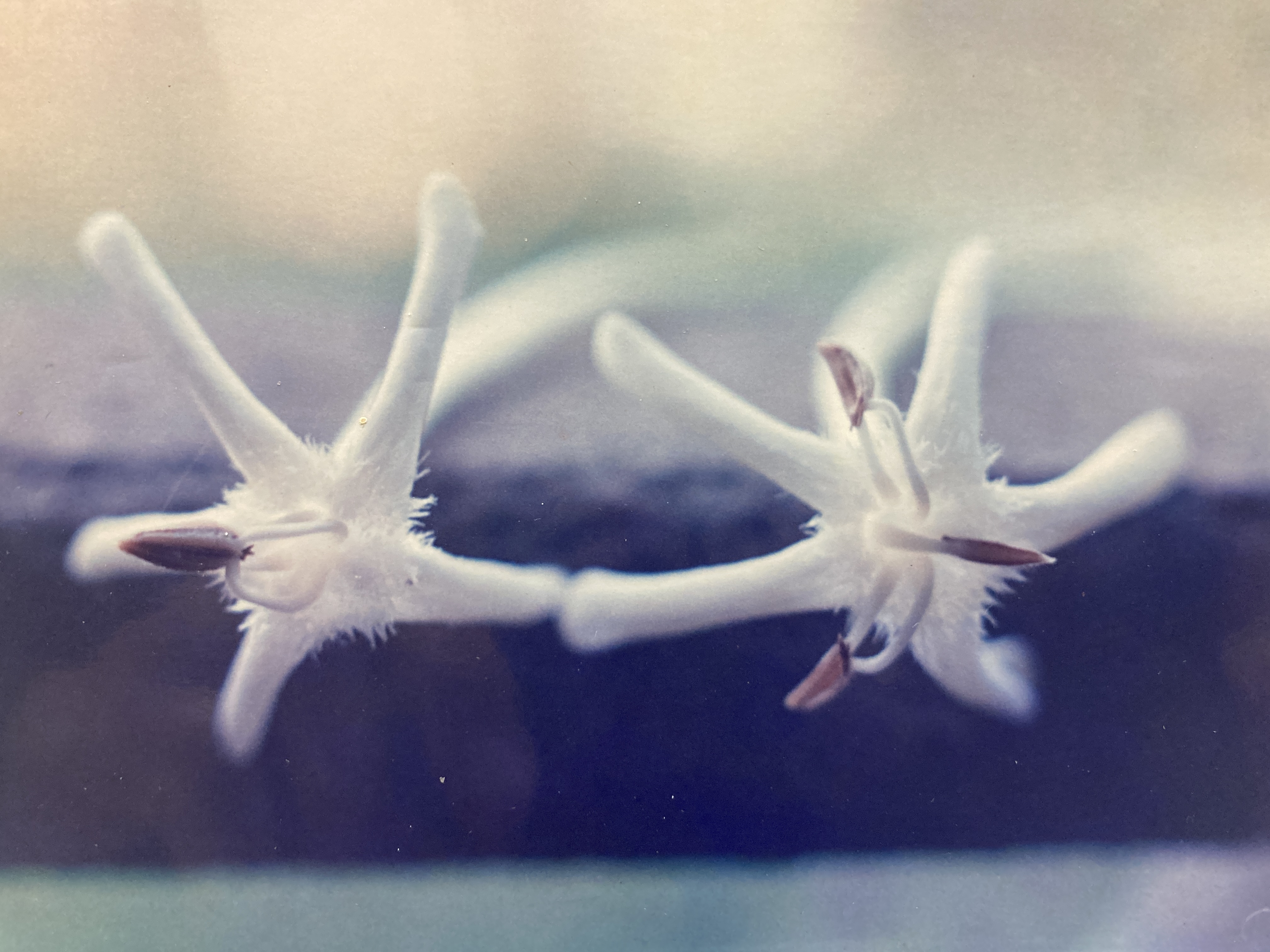Posoqueria latifolia (Rudge) Roem. & Schult.
Rubiaceae
GUAYABA DE MONO
Occasional evergreen understory treelet (4-10 m) found thriving in areas of moderate to high insolation – especially along forest edges fringing park trails and the rocky coastline. This small tree is remarkable for the anatomical components of its reproductive cycle – components that are unusual in both form and function. Posoqueria’s long, conspicuous white flowers release stored elastic energy in order to mechanically thrust their anthers forward into the faces of unwitting potential pollinators. Later, the tree bears rounded, green fruits that contain many unlikely, jewel-like and translucent seeds enveloped in a bright orange, edible pulp.
Description: Guayaba de Mono is most often a short, bent, irregularly shaped treelet of modest (10 cm) diameter, though rare individuals may boast girths twice as great and reach nearly 15 m in height. Clad in gray, smooth, unremarkable bark, the upper two-thirds of the trunk supports branches and that produce a moderately thick and irregularly shaped crown. The dark-green leaves (25 cm by 13 cm) are simple and oppositely arranged. Thick and waxy, the blades are widely elliptical in form and lack drip-tips.
Terminal panicles support about ten flowers each. Each blossom begins as a crook-necked bud at the end of a white corolla tube. Soon the corolla lengthens (eventually reaching some 14 cm) and the bud opens into an asterisk-like flower, 2.5 cm in diameter. Folding back towards the corolla tube, the five white petals surround an equal number of stamens and a single pistil. Two pairs of stamens are fused together by their fat brown anthers (the fifth is free). At its base, the flower is supported by a green, cup-shaped calyx. Posoqueria blossoms are very aromatic. Their heavy, strongly sweet, and perfumey scent is detectable over distances of many meters and often provides the first evidence of their presence. Flowering periods are highly synchronized among individuals – a feat of timing that is made even more intriguing by Posoqueria‘s lack of a well defined flowering season. Flowers often appear in sporadic and ephemeral bursts several times a year. Overall, the data seem to suggest that the species follows a two or three month fertility cycle, with blossoms more or less consistently re-appearing with this frequency. Usually, the strongest of these events occurs sometime during the dry season months of December through May.
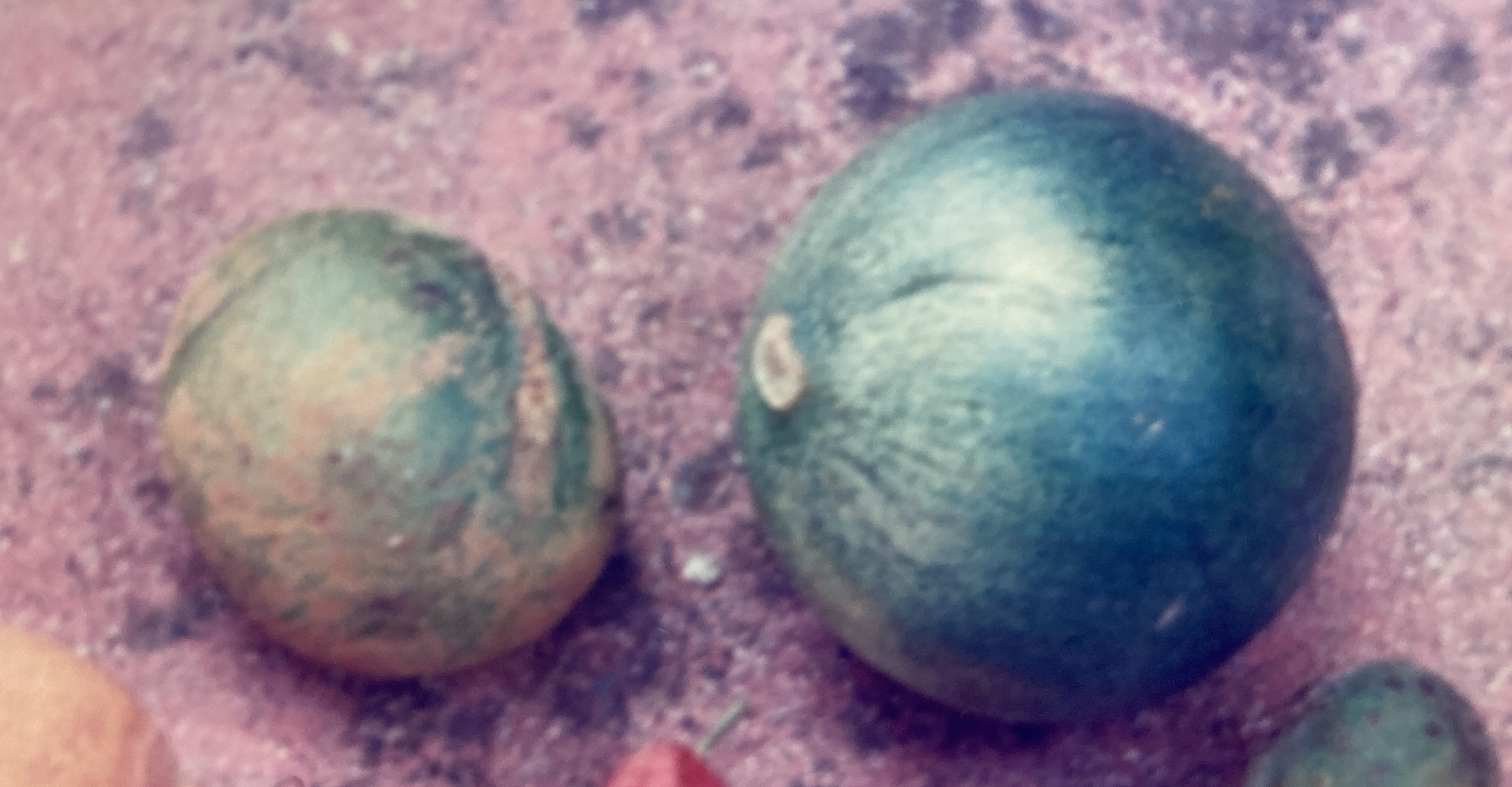
Successful pollination results in green, slightly striated, spherical fruits that terminate in short knobs or snouts. Growing slowly over the course of four or five months, these dense and smooth-skinned orbs achieve a final diameters of about 6 cm. By then, their significant weight and terminal position have caused the branches sustaining them to droop. Ripening finally occurs as the thick, glossy skin pales and turns yellow – completely or in mottled patches. Inside, tens of pebble-shaped, tightly packed seeds (1.5 cm) lie sheathed in edible, orange arils.
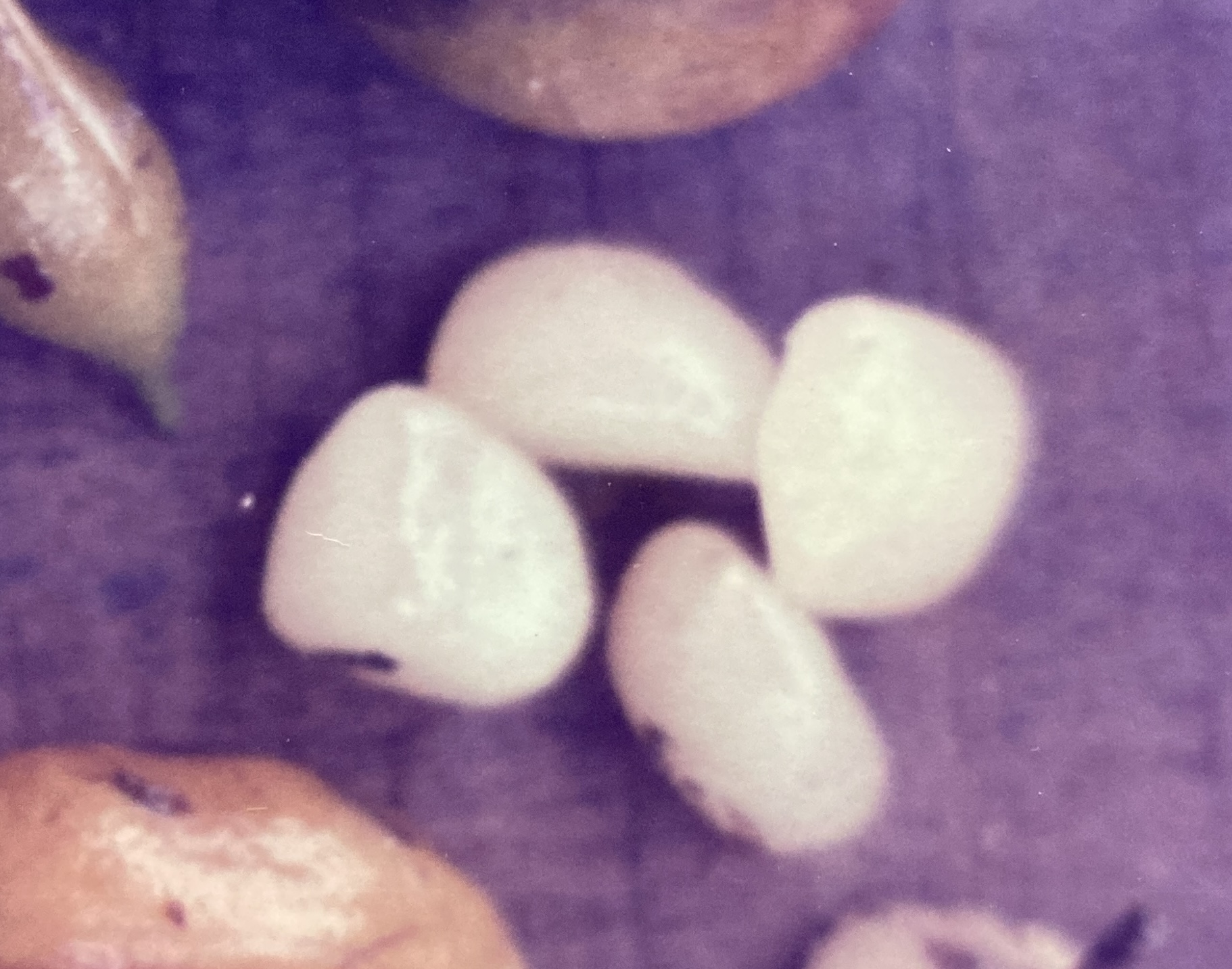
Resembling translucent, polished pieces of quartz, the seeds may easily be mistaken for small stones when found scattered on the ground. If the soil is moist and conditions are wet, germination occurs within a month of fruitfall. A taproot is generated and the remainder of the jewel-like seed rises aloft – hoisted by a ten-centimeter stem. Remaining in this unusual condition for several days, the greening leaves finally appear from beneath the translucent seed coat as it is shed. Harvests produced by the frequent but discreet flowering episodes appear to merge into one long, extended event, lasting from May to November and peaking during the last two months of this interval. Green fruits may be present in the canopies year round, but are scarcest during the dry season.
Similar Species: Faramea occidentalis, Chione sylvicola, and Eugenia acapulcensis are trees of small stature to whose sterile leaf samples might be confused with those of Posoqueria. Faramea has much narrower, even finger-like, foliage that should facilitate its distinction. Eugenia‘s leaves are less than half the size of Posoqueria‘s and this species has rougher, exfoliating bark as well. Although Chione sylvicola has very similar leaves to those of Posoqueria, this former tree is significantly larger, averaging ten to fifteen meters in height compared with Posoqueria‘s five or six.
Natural History: Posoqueria fruits are eaten and dispersed by arboreal mammals, especially white-faced monkeys. The flowers of this species – opening in the late afternoon – are probably pollinated primarily by hawkmoths (Croat, 1978), but the process includes a notable and unusual twist. Instead of relying passively on the probable – but still chance – encounter of an insect with its pollen-laden anthers, Posoqueria opts for a more aggressive strategy. Employing energy stored in stretched elastic tissues, this tree manages to thrust at least one stamen directly into the head of an unwitting, nectar-seeking insect. To accomplish this, a complex arrangement of flower parts has been assembled. All five stamens stand in a loose cluster, joined at the top by their fused anthers. One stamen, more centrally located than the rest, is bent backwards (away from its relaxed, equilibrium position) and held in place by the four remaining stamens. Supporting sideways stresses of their own, these latter stamens are arranged in opposing pairs and are stretched across the center of the flower to where their anthers meet. A tenuous structure, even a slight disturbance is enough to overcome the small adhesive force that maintains its delicate integrity. Once free, the four lateral stamens rapidly fling apart, releasing their stored elastic energy and folding back toward the petals. Now unrestrained, the flexed, central stamen springs forward, and its pollen-laden anther rapidly traces out a wide, ninety degree arc. When a large moth or bee bumbles into the flower and nudges the cluster of fused anthers, it soon finds itself in the path of the swiftly-moving anther and it receives a powerful dusting when the two collide. This complex mechanism virtually ensures that the visiting insect will be well dusted with pollen and thus enlisted to transport its cargo to another flower.
From an evolutionary standpoint, it is not difficult to hypothesize how such an adaptation originated. Ancestral flowers of this species probably had five independent and straight stamens. Through a genetic mutation – a random error in the DNA that records and controls plant morphology and behavior – one individual may have inherited a gene that caused it to form clumped stamens, fused together by their anthers. Under most circumstances, such a randomly-produced change in a complex structure would be detrimental: the defective flower would be less effective at achieving pollination (perhaps because all of its anthers were in one place). Since this process is a prerequisite to seed formation and hence reproduction, the mutated gene that caused the defect would eventually be lost. However, with anthers that were not only united but spring-loaded as well, this genetically altered Posoqueria would have seen its pollination success improved. Since its pollen would have carried the mutated gene along with it, new seeds and seedlings bearing the gene could have then proliferated. Eventually, individuals lacking the defect would have disappeared, unable to compete successfully with trees bearing the more “advanced” flowers.
Uses: Allen (1956) says that the wood is heavy, hard, white, and fine grained, though it has no known uses. He also points out that the species could have commercial value as an ornamental.
Distribution: In Manuel Antonio National Park (MANP), Posoqueria is found in sunny locations at the forest edge: alongside beaches (though generally not in sandy soil), the rocky coastline and trails in Punta Catedral and Puerto Escondido. In Costa Rica, the species is found all along the Pacific coast. Posoqueria ranges from Mexico to Peru and Brazil.
Images: Leaves & Flowers Flowers Flowers2 Flowers3 Fruit Fruit2

